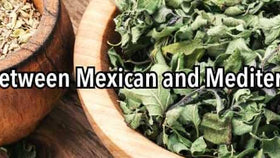Is Sweet Paprika The Same As Regular Paprika?
There are a variety of paprikas and some folks might assume they are interchangeable ingredients, but the world of paprika is far more nuanced than it seems—offering up sweet, spicy, smoked, a wide range of Hungarian and Spanish paprikas, and more. Considering the title of this post, you are likely wondering why I didn’t mention “regular” paprika.
The truth is, there really is no such thing as regular paprika. Paprika, by definition, is simply ground-up red peppers from the capsicum annuum species. The mildest of these peppers is likely to be the sweet bell pepper, from which most paprika is made. Because of this, when you come across paprika in the spice aisle and it lacks another descriptor, it is likely sweet paprika.
That being the case, for the purpose of clarity, the answer to the original question is: Yes, sweet paprika is the same thing as 'regular' paprika.
In this article, we will explore the subtle yet significant distinctions between paprika varieties to help you make informed choices in your culinary endeavors.
What’s the Difference Between the Various Types of Paprika?
The Spectrum of Paprika Varieties
To understand the differences between sweet paprika and other paprika varieties, it's essential to grasp the spectrum of flavors and heat levels that paprika can offer. Because paprika is derived of ground peppers, all of which have different heat levels, the range of spice can vary greatly. Each contributes it’s own character, transforming the flavor profile and intensity of the dish.
Sweet Paprika
Sweet paprika is the most common paprika variety and is known for its mild, slightly sweet flavor, which comes from the red bell peppers it is made from. Sweet paprika is often used to add not only flavor, but also color to dishes. It is commonly found in dishes like deviled eggs, pasta and potato salads, and roasted poultry. It's the perfect choice when you want to infuse a dish with color and a mild, fruity undertone without overwhelming it with heat.
Spicy Paprika
Spicy paprika has a kick of heat and comes across as more earthy than sweet. It's derived of chile peppers with higher levels of capsicum, and as such, delivers a slight fiery, punch to dishes. The heat level can vary, but it is generally considered to be at a moderate spice level. Spicy paprika is ideal for adding a kick to dishes like chili, curry, and seafood.
Smoked Paprika
Smoked paprika is made from dried peppers that are smoked before grinding. The peppers chosen for smoking will vary by supplier, and as such, the heat intensity will also vary. For the most part, you can expect smoked paprika to impart a smoky, slightly sweet, and earthy flavor to dishes. Just read the label and make sure you know whether you are getting a sweet or spicy version, so you can obtain the heat level you desire. Smoked paprika is often used to lend a barbecue or grilled flavor to foods, making it a favorite in dishes like braises, barbecue rubs, and smoked meats, like wings.
Hungarian and Spanish Paprikas
Paprika is widely used in Hungarian and Spanish dishes. As such they are both known for the quality and depth of flavor of their paprikas. You’ll find smoked, spicy, and sweet versions from both places, but the adjectives don’t end there, especially with the Hungarian varieties. As you would expect, Spanish and Hungarian paprikas are popular choices for dishes belonging to the respective country’s cuisine. For Spanish, that might be paella, patatas bravas, or chorizo. For Hungary, that might be goulash or paprikash.
Now that we've explored the various paprika varieties, it's clear that there's no such thing as "regular" paprika. Sweet paprika is just one facet of the diverse paprika world, but when a recipe specifies paprika without further clarification the recipe writer probably meant sweet paprika, or wanted to leave it up to the cook. When in doubt sweet paprika is a good bet due to its versatility and mild nature but it’s important to consider the flavor profile you want to achieve in the dish and choose based on that.










Slofoodgroup
Author